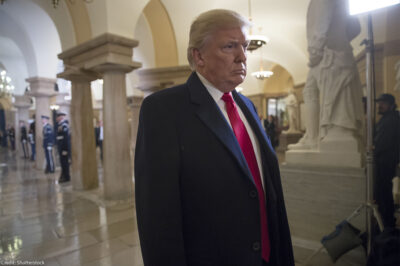first of three entries
After a summer of movie prequels, this fall brings us the final chapter of John Roberts' ambition to serve on the United States Supreme Court. But long before the nation knew Roberts' name, he was subject to not just one but two failed nominations to our appellate courts. The fact that he was rebuffed for lower court positions twice before may be news to many and could be cause for pause to some.
Roberts, whose pedigree of ivy league schools and prestigious clerkships is widely known now, was first nominated to a lifetime position as a federal judge hearing appeals over a decade ago.
He was quite young but, as presidential advisor Brad Berenson said recently, Roberts had proven his mettle in political perches in the Reagan and first Bush administrations. Berenson went on to say that he had no concerns that Roberts' views would waiver on the Supreme Court, since his views had been strengthened and "tempered" by the political fires of Washington, where partisanship has only grown with the years. Thus, judge pickers like Berenson may not be worried that a Justice Roberts would slide to the middle on the court like other nominees whose commitments were untested in Washington.
Some might say Berenson's candid remarks to Ted Koppel the night of the nomination were both astute and unintentionally revealing: one can certainly see a marked difference among the seven Republican appointees to the nine-member Rehnquist court, with those justices who served as top policy advisors or policy makers in Washington ruling in a more consistently deferential way on cases involving the Republican agenda than those whose careers were made outside the beltway.
Rehnquist served as Assistant Attorney General at the Justice Department in the Nixon Administration, Scalia held that same post in the Reagan Administration, and Thomas hailed from Reagan's embattled Equal Employment Opportunity Commission, while O'Connor served in the Arizona legislature, Kennedy practiced law in San Francisco, Souter served on the New Hampshire Supreme Court, and Stevens was a registered Republican who had worked in Washington for a few years after law school but returned home to Chicago and became widely regarded as a judge's judge so fair-minded was his reputation.
In any event, John Roberts was nominated to the DC Circuit by the first President Bush in the early 1990s. Due to his lack of judicial experience the then-more-rigorous ABA did not give him the high ABA rating it would most likely bestow today. Roberts had cut his teeth in the Justice Department working with Ken Starr, who was his senior by a few years and was also nominated to the DC Circuit at a very young age. He would also later be on the short list for the Supreme Court during the first Bush administration, for the openings that eventually passed to President Clinton. Clinton chose Ginsburg and Breyer, rather than Starr and Hatch who had been at the top of the list for Bush. Starr is now more widely known as the prosecutor who wrote the report on the Monica Lewinsky scandal.
The ACLU's Roberts memo describes some of his early work with Starr and another later George W. Bush pick for the appellate courts, Carolyn Kuhl. Suffice it to say that Starr, Roberts, and Kuhl were young stars in the Reagan administration, wielding tremendous influence over national policy, as illustrated by the debacle of the Reagan administration's decision to give Bob Jones University tax exempt status despite its overt policies of racial discrimination illustrates. (That ill-advised decision, counseled by these young policymakers, was rebuked by both the Supreme Court and Congress.)
coming tomorrow: the first Roberts nomination ...




